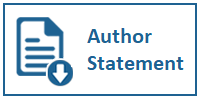Pengaruh Ukuran Perusahaan, Debt to Equity Ratio, Return on Equity, Produktivitas dan Current Ratio Terhadap Peringkat Obligasi
Studi Empiris pada Perusahaan Keuangan yang Diperingkat oleh PT PEFINDO Periode 2012-2014 dan Terdaftar di BEI Periode 2011-2013
DOI:
https://doi.org/10.31937/akuntansi.v6i2.186Abstract
The objectives of this research is to examine the effect of Company Size proxied by Total Asset, Debt to Equity Ratio (DER), Return On Equity (ROE), Productivity proxied by Total Asset Turn Over (TATO), and Current Ratio (CR) both partially and simultaneously towards Bond Rating. Bond rating is important to be considered by investors and creditors since it can indicate the company's default risk. The objects of this study are financial institution which were entire financial companies that issuing bonds and rated by PT PEFINDO for 2012, 2013, and 2014, and listed at the Indonesia Stock Exchange periode 2011-2013. Total sample in this research are 18 companies that selected with purposive sampling and analyzed by using multiple regression method. The data used in this study are secondary data such as financial statements and list of bond rating PT PEFINDO. The result of this research indicates that (1) Company Size proxied by Total Asset had a significant affect towards bond rating (2) Debt to Equity Ratio (DER) had no effect towards bond rating (3) Return On Equity (ROE) had no effect towards bond rating (4) Productivity proxied by Total Asset Turn Over (TATO) had no effect towards bond rating (5) Current Ratio (CR) had no effect towards bond rating (6) Company Size, Debt to Equity Ratio (DER), Return On Equity (ROE), Productivity, and Current Ratio (CR) simultaneously have a significant effect towards Bond Rating.
Keywords: Company Size, Debt to Equity Ratio (DER), Return On Equity (ROE), Productivity, Current Ratio (CR), Bond Rating
Downloads
Downloads
Published
How to Cite
Issue
Section
License
Authors retain copyright and grant the journal right of first publication with the work simultaneously licensed under a Creative Commons Attribution-ShareAlike International License (CC-BY-SA 4.0) that allows others to share the work with an acknowledgement of the work's authorship and initial publication in this journal.
Authors are able to enter into separate, additional contractual arrangements for the non-exclusive distribution of the journal's published version of the work (e.g., post it to an institutional repository or publish it in a book), with an acknowledgement of its initial publication in this journal.















